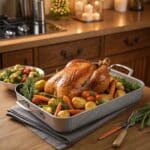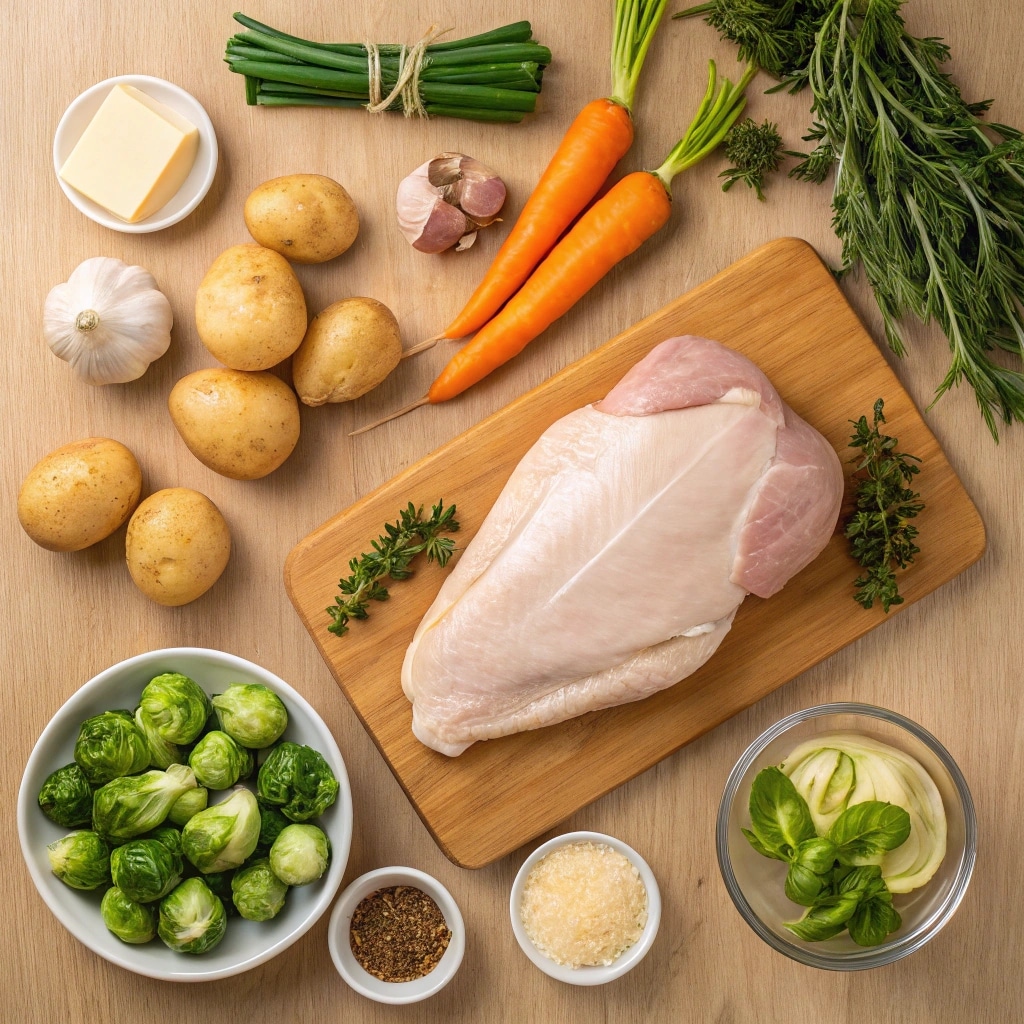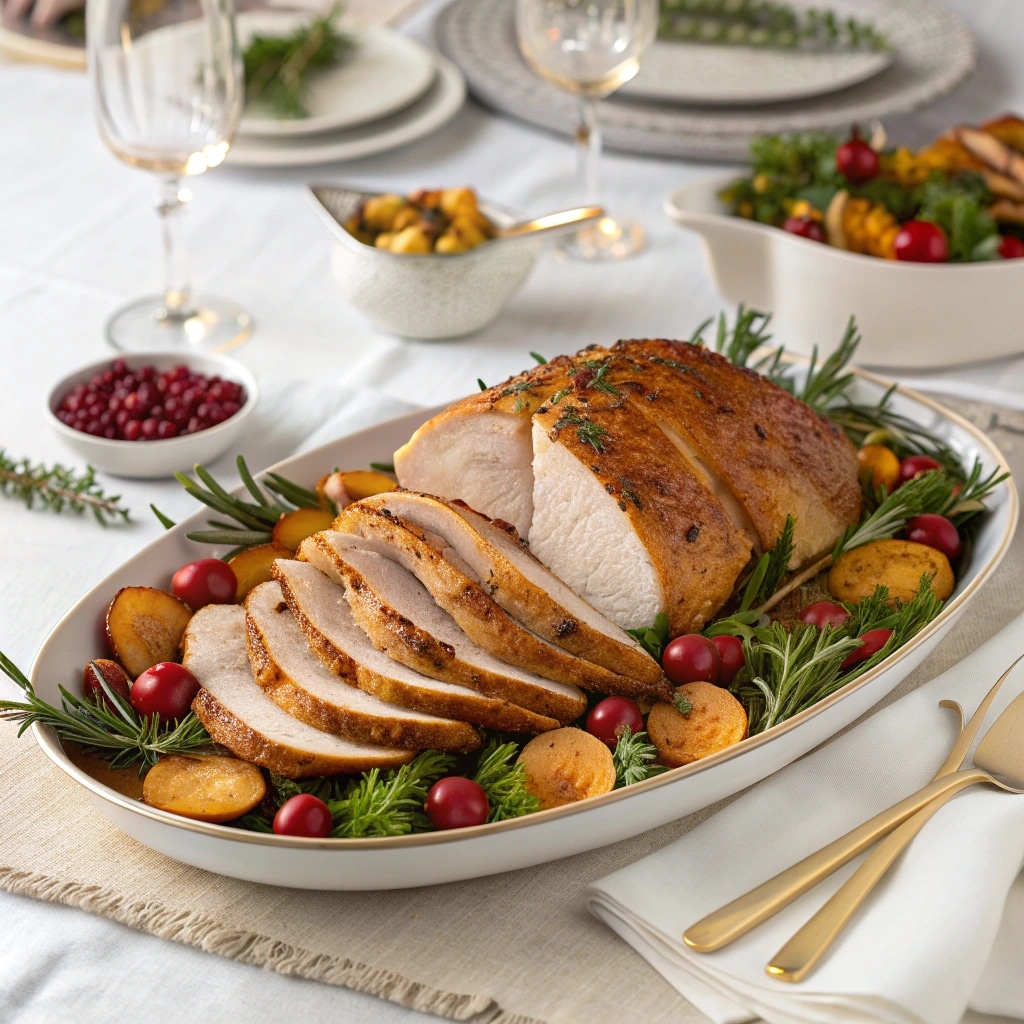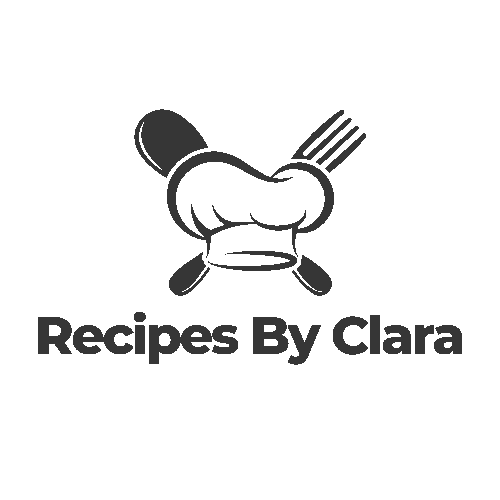If you’ve ever wished Thanksgiving dinner could be simpler, a One-Pan Thanksgiving Turkey might be the answer. Instead of juggling multiple pots and pans, this method brings everything together in one roasting pan for a stress-free holiday meal. You’ll enjoy tender, juicy turkey, perfectly roasted vegetables, and flavorful drippings with far less cleanup. In this article, I’ll share how to prepare, season, and cook your turkey alongside delicious sides, plus tips to avoid common mistakes. Whether you’re hosting a crowd or cooking for a smaller table, this approach keeps your holiday both easy and memorable.
Table of Contents
Why One-Pan Works for Thanksgiving
One-Pan Thanksgiving Turkey Advantages
The biggest appeal of a One-Pan Thanksgiving Turkey is how it streamlines the holiday. Instead of roasting the turkey separately and scrambling for oven space for sides, you place everything in one large roasting pan. As the turkey cooks, its juices mingle with vegetables, creating rich layers of flavor. This method not only saves time but also reduces the mountain of dishes that usually follows a Thanksgiving meal. Since everything roasts together, it stays warm until serving, which means less rushing back and forth to the kitchen. For smaller gatherings or families who prefer simplicity, the one-pan method is a game changer.
My First One-Pan Roast Memory
Hi there! I’m Clara, the heart and soul behind Recipebyclara.com. From my earliest memories, the kitchen has always been a place of warmth and creativity. I’ll never forget the first time I decided to try a One-Pan Thanksgiving Turkey. I was nervous, thinking it might be too simple to impress my guests, but the results amazed me. The turkey came out juicy, the vegetables roasted to perfection, and the cleanup was a breeze. My family loved how everything was infused with herbs and pan drippings. That experience showed me that tradition doesn’t have to mean complicated sometimes one pan truly is enough.
Print
One-Pan Thanksgiving Turkey: The Easiest Way to Roast a Holiday Feast
- Total Time: 3 hours 25 minutes
- Yield: 8–10 servings
Description
A stress-free holiday meal with juicy turkey, perfectly roasted vegetables, and flavorful drippings, all cooked in one roasting pan for easy cleanup.
Ingredients
- 1 whole turkey (10–14 lbs) or turkey breast/tenderloin for smaller groups
- 4–5 large carrots, peeled and cut into chunks
- 4–5 medium potatoes, cut into wedges
- 1 lb Brussels sprouts, halved
- 2 onions, halved or thickly sliced
- 1–2 lemons or oranges, halved
- 4–5 garlic cloves
- Fresh herbs: rosemary, thyme, sage
- 4 tbsp butter, softened
- 2–3 tbsp olive oil
- Salt and black pepper to taste
- 1–2 cups chicken or turkey broth (optional for pan juices)
Instructions
- Preheat oven to 325°F (165°C).
- Pat the turkey dry and rub softened butter under and over the skin. Season generously with salt, pepper, and herbs.
- Place onion halves or thick carrot slices in the bottom of a large roasting pan to serve as a natural rack.
- Set turkey on top of the vegetable base and stuff cavity with citrus halves, garlic, and herbs.
- Tent loosely with foil and roast, allowing 13–15 minutes per pound.
- Halfway through cooking, baste turkey with its juices.
- Add carrots and potatoes early in the roasting process.
- About 40 minutes before the turkey is done, remove foil to crisp skin and add Brussels sprouts around the bird.
- Continue roasting until breast reaches 165°F and thighs 175°F.
- Remove from oven, cover loosely with foil, and let rest for 20–30 minutes before carving.
- Serve turkey and roasted vegetables straight from the pan.
Notes
If breast cooks faster than thighs, tent with foil to slow browning. Avoid crowding vegetables to ensure caramelization. Deglaze the pan with broth for a quick gravy.
- Prep Time: 25 minutes
- Cook Time: 3 hours
- Category: Main Course
- Method: Roasting
- Cuisine: American
Choosing the Right Turkey & Pan
Best Size & Cut for One-Pan Turkey
When planning a One-Pan Thanksgiving Turkey, choosing the right size makes all the difference. If you’re feeding a smaller group, a bone-in turkey breast or tenderloin is ideal since it cooks faster and still delivers that holiday flavor. For larger gatherings, you can use a whole bird, but keep in mind that anything over 14 pounds may not fit comfortably in a single roasting pan. A general rule is about 1 to 1½ pounds of turkey per person. Smaller birds also roast more evenly, making them less likely to dry out. If you want to maximize tenderness, consider spatchcocking the turkey (removing the backbone so it lays flat). This method ensures even cooking and gives you more space in the pan for vegetables.
Pan Types & Setup Tips
The pan you choose matters just as much as the turkey itself. A sturdy roasting pan with high sides works best because it holds both the bird and the vegetables without spilling juices. If you don’t own a roasting pan, a deep sheet pan with a rim can work in a pinch, but be cautious with liquid overflow. Using a rack inside the pan helps elevate the turkey, allowing hot air to circulate for crisp skin while vegetables roast below in the drippings. If you don’t have a rack, layering thick slices of onion or halved carrots can serve as a natural base for the bird. Lining the pan with foil makes cleanup quicker, and tenting the turkey with foil during the first part of cooking helps lock in moisture. Once you remove the foil, the skin browns beautifully. Taking time to set up your pan correctly ensures that the one-pan method delivers both flavor and convenience.
Flavoring, Seasoning & Side Integration
Turkey Seasoning & Brining Alternatives
The beauty of a One-Pan Thanksgiving Turkey is how easily you can customize flavors. A classic choice is rubbing softened herb butter under the skin this keeps the meat moist while infusing it with garlic, rosemary, thyme, and sage. If you want to take it further, consider a dry brine. Rubbing the turkey with salt, pepper, and herbs a day in advance helps the seasoning penetrate deep into the meat. A wet brine is another option, but it requires extra space and cleanup, which takes away from the simplicity of the one-pan method. Dry seasoning is quicker and keeps everything easy. Don’t forget to season the cavity or place aromatic herbs and halved citrus inside; this releases subtle flavors as the turkey roasts. Whether you prefer bold garlic herb blends, smoky paprika rubs, or a touch of citrus zest, seasoning well is key to unlocking full flavor.

Integrating Sides in the Same Pan
The One-Pan Thanksgiving Turkey method shines when sides join the roast. Root vegetables like carrots, potatoes, parsnips, and Brussels sprouts are perfect because they hold up to long roasting times. To keep textures balanced, stagger when you add vegetables. Hearty potatoes and carrots can go in early, while delicate Brussels sprouts or green beans should be added in the last 30–40 minutes. To prevent soggy sides, avoid crowding the pan give vegetables some space so they can caramelize rather than steam. Toss them with olive oil, salt, and pepper before adding them around the turkey. As the bird cooks, its juices mingle with the vegetables, creating a built-in side dish rich with flavor. When you pull everything from the oven, you’ll have golden turkey and perfectly roasted vegetables ready to serve straight from one pan.
Cooking Steps & Troubleshooting
Step-by-Step One-Pan Roast Schedule
Cooking a One-Pan Thanksgiving Turkey is all about timing. Start by preheating your oven to 325 °F. Place the seasoned turkey on a rack or vegetable base in the roasting pan, then tent it loosely with foil. Roast according to weight about 13–15 minutes per pound checking occasionally to ensure even browning. Halfway through, baste the turkey with its own juices to keep it moist. Add root vegetables such as potatoes and carrots early, since they need more time. About 40 minutes before the turkey is done, remove the foil tent so the skin can crisp up. At this stage, add quicker-cooking vegetables like Brussels sprouts or green beans. Continue roasting until the breast reaches 165 °F and the thighs 175 °F on a meat thermometer. Once finished, remove the turkey from the oven, cover it loosely with foil again, and let it rest for at least 20–30 minutes before carving. Resting allows juices to redistribute, giving you moist, flavorful slices.
Common Problems & Fixes
Even with careful planning, challenges may come up. If the breast is cooking faster than the legs, tent the breast with foil to slow it down. If vegetables look soggy, spread them out more or place them on a separate baking sheet for the last 15 minutes. For dry turkey, brush with melted butter or a bit of broth before serving to add moisture. Burnt skin often means the oven was too hot, so monitor temperature and cover as needed. If drippings stick to the pan, deglaze with a splash of broth after roasting to create a quick gravy. With a little attention, these simple fixes can ensure your One-Pan Thanksgiving Turkey turns out juicy, flavorful, and holiday-ready.

FAQs
How long should I roast a turkey in one pan?
Plan for about 13–15 minutes per pound at 325 °F when roasting an unstuffed turkey in one pan. Smaller cuts like turkey breasts will take less time. Always check with a meat thermometer: 165 °F in the breast and 175 °F in the thigh ensures it’s safe and juicy.
Should I cook the turkey covered or uncovered?
Covering the turkey with foil for the first part of roasting keeps the meat moist. For golden, crisp skin, remove the foil in the last 30–45 minutes of cooking.
Do I need to add water or broth to the roasting pan?
Skip plain water, as it dilutes flavor. Instead, add a small amount of broth, stock, or aromatics like onions and herbs to the pan. This enhances flavor and creates delicious drippings for gravy.
Can I cook a frozen turkey in one pan?
Yes, but it takes longer. Cooking from frozen adds about 50% more time compared to a thawed turkey. Always use a thermometer to confirm safe internal temperatures before carving.
Conclusion
A One-Pan Thanksgiving Turkey is proof that holiday cooking doesn’t have to be overwhelming. With the right pan, a well-seasoned bird, and carefully chosen vegetables, you can serve a full feast from a single dish. This method saves time, reduces stress, and makes cleanup easy, all while delivering juicy turkey and flavorful sides. It’s a perfect solution for busy cooks or smaller gatherings, but it also scales beautifully for larger celebrations. Give the one-pan approach a try this Thanksgiving and discover just how simple and satisfying holiday cooking can be.

